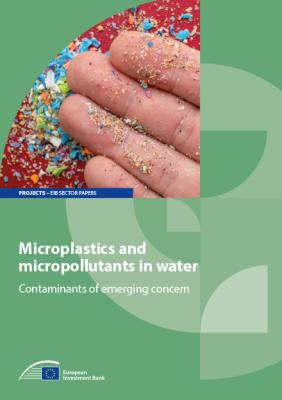
Description
Microplastics are tiny solid plastic particles increasingly polluting soils, rivers, lakes, and oceans. According to a recent estimate, a person who eats seafood will swallow, on average, 11 000 pieces of microplastics every year. It's with not surprise that the majority of EU citizens are concerned about the impact of plastic products on their health (89%) and on the environment (88%).
Micropollutants are almost invisible parts of products that are used daily, such as in pharmaceuticals, industrial chemicals, cosmetics, and pesticides. Most of these, unlike microplastics, most micropollutants cannot be removed by conventional wastewater treatment plants and thus find their way into the environment and potentially back into our food chain.
This sector paper describes the adverse impacts of microplastics and micropollutants on human and animal life, recent policy developments to address these problems and an overview of possible pathways for the EIB to help reduce the release of micropollutants and microplastics in water.


